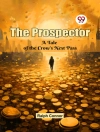Harold Mac Grath’s ‘The Place of Honeymoons’ is an enchanting exploration of love and relational dynamics set against the backdrop of the early 20th century. The narrative style combines humor with tenderness, illustrating the bittersweet complexities of romance through the journeys of its characters. Mac Grath deftly weaves in social commentary, critiquing societal norms while simultaneously celebrating the joy of love. The book’s charm lies in its rich descriptions and dialogue, which transport readers to both the idyllic locations and the emotional landscapes of the characters’ experiences. As a prolific author and playwright, Harold Mac Grath possessed a keen understanding of human emotions, which undoubtedly influenced the thematic depth of this novel. His exposure to various cultures and social settings, both as a resident of the bustling city and a traveler, shapes his portrayal of the intricate dance between intimacy and individuality. Mac Grath’s insights into the romantic ethos of his time further enhance this exploration of relationships during an era marked by shifting societal expectations. ‘The Place of Honeymoons’ invites readers into a beautifully rendered world where the joy and challenges of love intertwine. With its engaging prose and thoughtful character development, this novel is a delightful read for anyone seeking to understand the universal themes of love and commitment. It is a timeless piece that resonates well beyond its historical context, making it essential for lovers of classic literature.
Про автора
Harold Mac Grath (1871–1932) was a prolific American novelist, short story writer, and screenwriter during the early 20th century. Born in Syracuse, New York, he embarked on a literary career following a stint as a reporter. His popularity soared with publications like ‘The Place of Honeymoons’ (1912), where he showcased his skill in weaving romance and intrigue [Cooke, J. (2006). American National Biography]. Mac Grath’s distinctive narrative style combined vivid characters, exotic settings, and fast-paced plots, capturing the imagination of a wide readership. This combination rendered his work highly adaptable to the silent film era, with many of his novels, including ‘The Place of Honeymoons’, being made into films [Hutchinson, G. (1934). The Golden Era of the American Novel]. Mac Grath’s significant contribution to early 20th-century American literature is marked by his capacity to resonate with his contemporaries’ aspirations and anxieties, and his stories often reflect the transition from Victorian ideals to modern perspectives. Although his name may not resonate as prominently in the literary canon as some of his contemporaries, Harold Mac Grath’s works offer a window into the zeitgeist of his time and remain of interest to scholars examining early 20th-century popular culture and literature.












